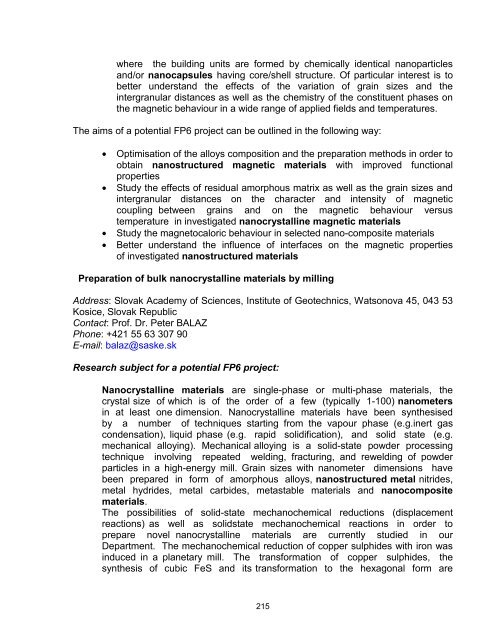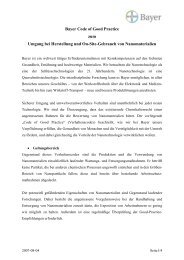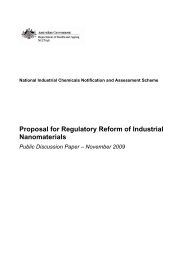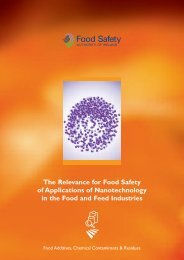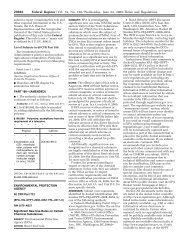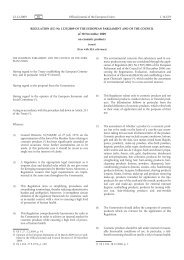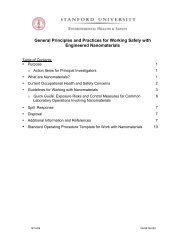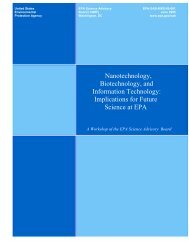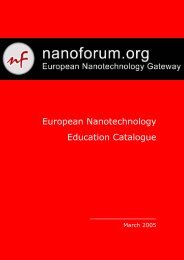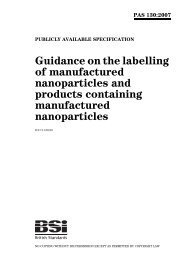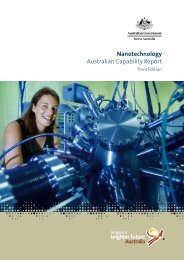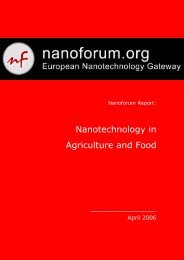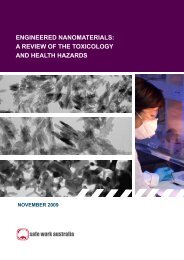Nanoforum - Nanotech Regulatory Document Archive
Nanoforum - Nanotech Regulatory Document Archive
Nanoforum - Nanotech Regulatory Document Archive
Create successful ePaper yourself
Turn your PDF publications into a flip-book with our unique Google optimized e-Paper software.
where the building units are formed by chemically identical nanoparticles<br />
and/or nanocapsules having core/shell structure. Of particular interest is to<br />
better understand the effects of the variation of grain sizes and the<br />
intergranular distances as well as the chemistry of the constituent phases on<br />
the magnetic behaviour in a wide range of applied fields and temperatures.<br />
The aims of a potential FP6 project can be outlined in the following way:<br />
• Optimisation of the alloys composition and the preparation methods in order to<br />
obtain nanostructured magnetic materials with improved functional<br />
properties<br />
• Study the effects of residual amorphous matrix as well as the grain sizes and<br />
intergranular distances on the character and intensity of magnetic<br />
coupling between grains and on the magnetic behaviour versus<br />
temperature in investigated nanocrystalline magnetic materials<br />
• Study the magnetocaloric behaviour in selected nano-composite materials<br />
• Better understand the influence of interfaces on the magnetic properties<br />
of investigated nanostructured materials<br />
Preparation of bulk nanocrystalline materials by milling<br />
Address: Slovak Academy of Sciences, Institute of Geotechnics, Watsonova 45, 043 53<br />
Kosice, Slovak Republic<br />
Contact: Prof. Dr. Peter BALAZ<br />
Phone: +421 55 63 307 90<br />
E-mail: balaz@saske.sk<br />
Research subject for a potential FP6 project:<br />
Nanocrystalline materials are single-phase or multi-phase materials, the<br />
crystal size of which is of the order of a few (typically 1-100) nanometers<br />
in at least one dimension. Nanocrystalline materials have been synthesised<br />
by a number of techniques starting from the vapour phase (e.g.inert gas<br />
condensation), liquid phase (e.g. rapid solidification), and solid state (e.g.<br />
mechanical alloying). Mechanical alloying is a solid-state powder processing<br />
technique involving repeated welding, fracturing, and rewelding of powder<br />
particles in a high-energy mill. Grain sizes with nanometer dimensions have<br />
been prepared in form of amorphous alloys, nanostructured metal nitrides,<br />
metal hydrides, metal carbides, metastable materials and nanocomposite<br />
materials.<br />
The possibilities of solid-state mechanochemical reductions (displacement<br />
reactions) as well as solidstate mechanochemical reactions in order to<br />
prepare novel nanocrystalline materials are currently studied in our<br />
Department. The mechanochemical reduction of copper sulphides with iron was<br />
induced in a planetary mill. The transformation of copper sulphides, the<br />
synthesis of cubic FeS and its transformation to the hexagonal form are<br />
215


